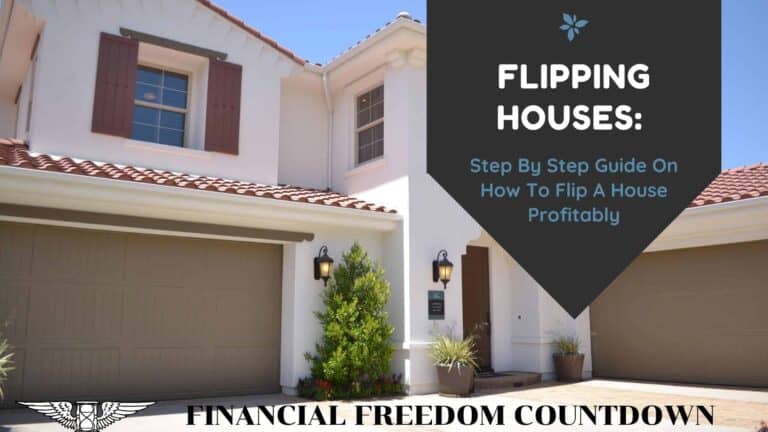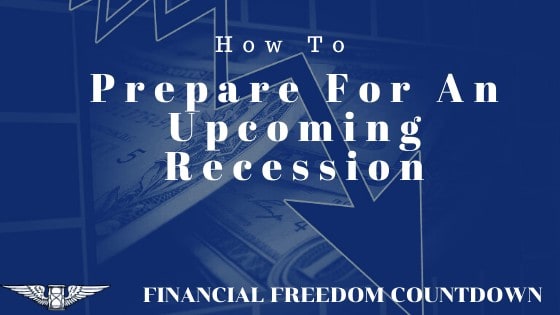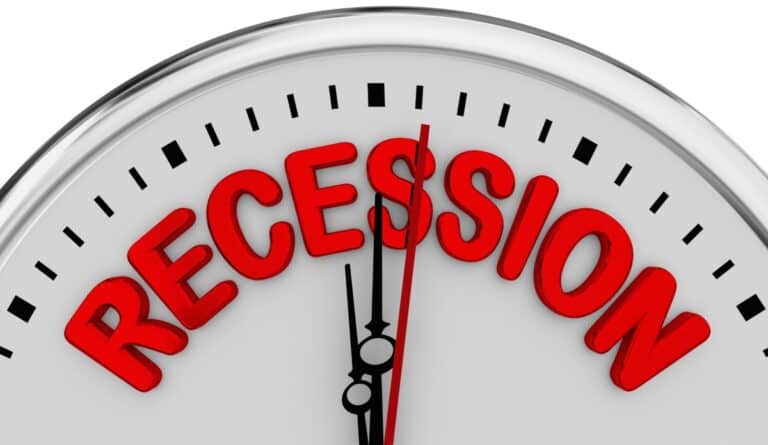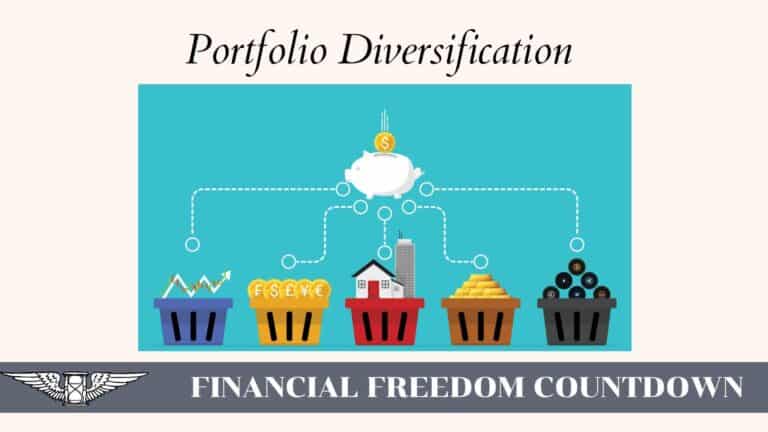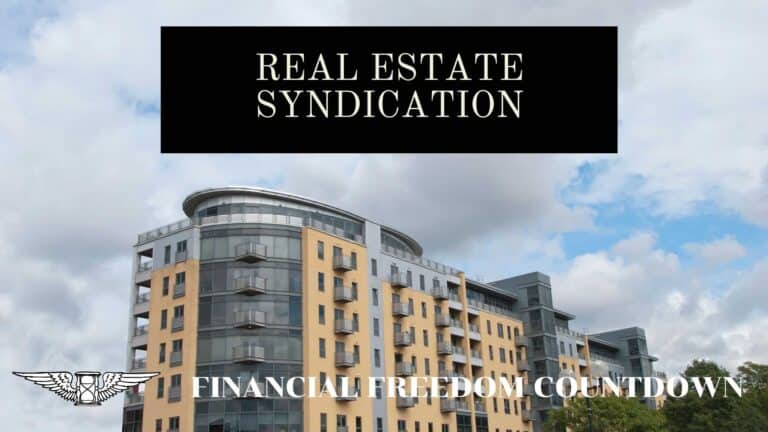How To Evaluate A Rental Property Including 7 Common Mistakes To Avoid

You are ready to leap into real estate investing, but you don’t know where to start?
Owning rental property is a great way to build generational wealth and diversify your income-producing assets. But before you get started, it’s essential to know what you’re getting into.
Investment in rental properties can be profitable, but it is also hard work with many risks. There are several real estate investment risks so one should have an appropriate risk mitigation plan in place. You must pick the right property and manage it well to succeed as an investor.
This article will show how to evaluate a rental property so that your first investment is a success!
How Rental Properties Make Money
When looking through rules of evaluating investment property, it’s essential to know about equity appreciation and cash flow to determine how well the rental properties will make money. There are two ways rental properties generate incomes for landlords; these are:
1. Cashflow (rental income)
2. Equity (increased value of the property)
It would be great if the rental property investment you bought included both. As equity rises and with a steady income from the property, the generated wealth can be significant in the long run by combining the two. Based on your preferred method, analyze the investment property to gauge its reasonable value.
How To Evaluate A Rental Property Investment Using Cash Flow Or Rental Income Method
Rental property owners are often advised to focus on cash flow. Rental property cash flow is a reliable method to evaluate an investment since it is predictable. It focuses on the present net income generation when buying rental property.
When buying a rental property as an investment, inexperienced landlords only focus on rent vs. mortgage payment.
But there are several ongoing expenses that one needs to consider when buying a rental property investment.
Typical expenses to consider when evaluating rental property investment are
- Mortgage (principal and interest)
- Property Taxes
- Insurance
- Vacancy Rate (10% assumption)
- Maintenance and Repairs (5% assumption)
- Capital expenses including cash reserves (5% assumption)
- Property Manager fee (5%, which is lower than average)
- HOA fees (if applicable)
- Utility costs (if applicable)
We have excluded one-time transaction costs such as closing costs, title insurance, realtor fees, points on loan, etc., since these are usually added to the purchase price and are not ongoing expenses.
Let us apply the cash flow analysis to a Single Family House with three bedrooms and two baths in San Francisco. The sale price of a median home in the area is $1.3M.
| Purchase Price | $1,300,000 |
| TOTAL INCOME (Monthly Rent) | $8,000 |
| Monthly Mortgage (20% down payment and 30 year fixed) | $4,385 |
| Monthly Taxes | $1,321 |
| Insurance | $238 |
| Vacancy (10% assumption) | $800 |
| Maintenance (5% assumption) | $400 |
| Capital expenses (5% assumption) | $400 |
| Property Manager fee (5% which is lower than average) | $400 |
| TOTAL EXPENSES | $7944 |
This landlord has been very diligent in anticipating all the costs involved in owning a rental property. Also, the property is not over-leveraged as the landlord has invested a significant 20% down payment of $260,000.
The cash flow method indicates how much real estate passive income the landlord gets after accounting for operating expenses (including reserves).
The landlord barely makes a monthly positive cash flow of $56.
The Cash on Cash return of the down payment is a terrible 0.26%. Of course, one could juice up the returns by advertising it as a short-term or vacation rental. However, the rules in San Francisco for Airbnb are stringent, with a government department scouring the listings and matching them against permits.
If the landlord had adopted my strategy of investing Emergency Funds at 8% return, or the current I-Bonds yielding over 7% risk-free rate backed by the government, they would have a better ROI. Since the net rental yield is lower than the risk-free rate, I would not consider buying this rental property.
Of course, this example illustrates that San Francisco property prices are crazy! Many investors like myself who live in expensive locations run the numbers and can’t justify buying a rental property investment in the local market.
Out-of-state investing is an option but being a long-distance landlord is not easy, especially when starting. Since I live in San Francisco and do not want to be a remote landlord, I have invested in crowdfunded real estate.
To get started with real estate crowdfunding, Fundrise, DiversyFund, or Streitwise with a minimum investment of $10, $500, and $5,000 respectively are available to non-accredited investors.
Or, if you are an accredited investor, crowdfunding real estate platforms like PeerStreet are a great option with a minimum investment of only $1,000.
All the platforms are free to sign-up, and you can browse the various properties and learn before committing any funds.
How To Evaluate A Rental Property Investment Using Equity Price Appreciation
When talking about the property price increase, we are not referring to the regular change in prices due to inflation. Typically property prices increase at the rate of inflation or around 1-2% above inflation. Based on the Case-Shiller home price index, the average annual home appreciation rate has been 2.5%.
Equity growth dwells on the prediction of the future and is responsible for massive increases in prices. Often policy changes occur, such as a new highway through the town, which can cause rapid growth in prices. Or the opening of a new sizeable stable employer such as a medical center or Amazon HQ2. Unless you have prior knowledge or get extremely lucky, evaluating a rental property investment based on equity growth is harder.
While it is possible to force price appreciation in an income property through value add, it involves a significant expense, especially for a first-time rental property investor. Extensive upgrades also have to be done on the property to increase equity quickly.
Without forced appreciation, the increase in overall property and land price value in the area is unpredictable.
You can, however, pull simple one-time levers to generate additional cash flow even with buying and holding long-term rental property.
For example, you rent a single-family house to a tenant. But the tenant is a hoarder and also pays for a self-storage unit offsite. You could install a shed in the backyard and charge extra for the shed. The tenant pays a lower amount compared to the storage unit and can access her stuff more easily. You get an increased cash flow every month. It is a win-win situation.
Or you might own a fourplex and decide to install a vending machine on site. The tenants don’t need to drive to the store for a quick snack, and you get additional income from your real estate portfolio.
Properties in expensive cities like San Francisco and New York rely more on price appreciation than cash flow.
If we compare buying rental property to stocks, the cash-flowing properties are similar to dividend investing, while the capital appreciation properties are like growth stocks or even moonshot investments. Never fall into the trap of buying negative cash-flowing properties.
Real Estate Investor Metrics To Evaluate A Rental Property Investment
The most common numbers investors use to assess expected rental property performance to inform their buying decision are
Net Operating Income (NOI)
The term NOI refers to the earnings you should anticipate from a property after purchase. NOI is calculated by taking the annual income and subtracting the yearly expenses except for the capital expenditures and PITI payments.
NOI can assist you in standardizing a group of properties for easy comparison and help you determine whether an investment will generate enough net income to cover your monthly mortgage payments. However, you should not usually rely on NOI alone since it omits the acquisition cost, namely capital expenditures, mortgage payment, interest payment, and taxes.
Return on Investment (ROI)
You can use ROI to compute the return on investment across various properties with various values. Add your cash flow and principal payment, then multiply by 12 to arrive at your yearly return. The annual return is divided by the total cost of your purchase to calculate your ROI.
Price to Rent Ratio
The price-to-rent ratio is a metric that compares median home prices and rents in a given market. To calculate the percentage, divide the median house price by the median yearly rent.
The One Percent Rule
Many experienced investors use a 1% rule of thumb to evaluate rental property investment. The one percent rule is a popular metric for the rent-to-price ratio to estimate cash flow. Based on the 1% rule, a property purchased for $100,000 should rent for $1,000.
The advantage of the 1% rule is that it is a crude way to filter cash-flowing properties. However, it doesn’t work in most markets.
The 50% Rule In Real Estate
The 50% rule is a common method for investors to assess a prospective rental investment quickly. However, it, like any rule of thumb, has its limits.
According to the 50% Rule, you should estimate your operational expenditures to be equal to half of the gross income (sometimes known as an expense ratio of 50%).
If a rental property generates $50,000 in gross rents each year, you should expect that $25,000 of that will go towards operating expenses, excluding the mortgage payment. Financing costs like principal and interest payments are excluded when calculating the 50% rule.
The 50% rule allows for some rapid, back of the napkin calculations to see if a deal might make sense, just like the 1% rule.
Cash-On-Cash (CoC) Return Or CCR
A better metric than the one percent rule is the Cash-On-Cash (CoC) return, which considers most rental properties purchased with a mortgage. Usage of leverage is one of the significant reasons real estate wins when deciding to invest in real estate or stocks.
COC allows you to compare properties and evaluate performance based on the amount of money into it. When you add capital expenditure to NOI and divide it by the investment costs, you come up with COC.
Cash-on-cash return is advantageous to figure out which financing option is best for new investment, and you may discover several creative financing alternatives.
Bear in mind that the longer you hold the income property, the cash on cash return decreases because you are paying down the mortgage and adding to the property’s capital. Cash-out refinance is a standard method to reduce your cash investment in the property, but only when you have more attractive investing strategies, as I did last year.
Gross Rental Yield
The gross rental yield for a single property may be calculated by dividing the yearly rent collected by the total property cost. The purchase price, closing costs, and renovation expenditures are all included in the overall property cost.
Gross Rent Multiplier (GRM)
The Gross Rent Multiplier is a metric that helps investors compare properties and roughly estimate the value of a building. The property’s price is divided by its gross rental income to arrive at the figure.
Gross Rent Multiplier = Property Price or Value / Gross Rental Income
Your region and comparable houses determine a “good” GRM. The lower the GRM is compared to other similar properties in the same market, the more appealing an investment becomes. That’s because the property generates higher gross income that can be used to pay for itself quicker than alternative homes.
Capitalization Rate Or Cap Rate
The capitalization rate, often known as the cap rate or net rental yield, is a better metric than the Gross Rental Yield because it factors in operating costs. You can calculate the cap rate by starting with the yearly rent and subtracting out annual expenses, then dividing that number by the overall property cost.
The capitalization rate is one of the most critical metrics for valuing an income-generating property because you can use it to determine market value.
Market value = Net Operating Income / Cap Rate
Assume a property is forecast to produce Net Operating Income (NOI) of $1.5 million over the next ten years. If it were discounted at a 12% capitalization rate, the property’s market value would be $1.5M/0.12 = $12.5M.
If the real estate broker sells the property for $11.5M, it could be a great deal since you buy it below the forecasted market value based on the cap rate.
But if she is offering it for $14M, then you might not bid on it.
The cap rate indicates the amount of return you’ll get on a property without factoring in the financing.
In general, the higher your cap rate is, the deal has more risk. That’s because a high cap rate indicates greater profits and, as a result, increased risk. You typically see higher cap rates in risky markets versus lower caps in stable and more significant markets like New York City or San Francisco. Constantly evaluate cap rate in a local context instead of seeking out a good cap rate.
GRM is different from Cap rate because GRM uses gross rental income while Cap rate uses Net Operating Income (NOI)
Internal Rate of Return (IRR)
The IRR is a percentage that reflects how well your investment is doing throughout its holding period. It’s the rate at which a property’s value increases over time. The calculation considers not just net operating income and purchase price but also long-term yield.
Set the property’s net present value to zero when calculating IRR, and use expected cash flows for each year you intend on keeping the investment properties. The net present value represents money today versus the future after it has accrued compound interest. It’s a complex calculation, so most investors use Excel’s IRR function to get the ratio.
Investors frequently utilize IRR to compare properties, but you should be aware of its limitations. It presumes a constant rental market and no unexpected repairs. The properties you evaluate should have comparable sizes, uses, and holding durations.
IRR is another practical way to gauge whether or not a property is performing well for you.
Operating Expense Ratio (OER)
The OER is a statistic that determines how effectively you manage expenses against income. To calculate your OER, take all operating costs, deduct depreciation, and divide by operating income. OER is one of the most popular ratios among investors because it includes depreciation, making it more inclusive of real estate costs.
The lower your OER is, the more efficient you are at keeping costs down relative to income. If your OER is on the rise, it could be a sign of some problems.
Loan To Value (LTV) Ratio
The Loan to Value Ratio is a metric that assesses the debt on an asset. The LTV is important to borrowers because it indicates how much equity you’ll need to finance against the property’s current market value. If you plan to operate a real estate syndication, the investors will care about this metric. I emphasize the LTV ratio as the primary filtering criteria in my checklist to evaluate crowdfunded real estate.
Even if you are not seeking external funding, LTV is the most reliable way to track your real estate investment equity, accounting for debt.
Debt Service Coverage Ratio (DSCR)
Another metric considered by lenders is your DSCR. It compares the amount of money you have available to service debt to your total debt burden. To compute your DSCR, divide net operating income by debt payments.
Lenders consider your DSCR while evaluating your ability to repay a new mortgage, especially in commercial real estate. A high ratio indicates that you are over-leveraged, making it more challenging to qualify for funding.
Yes, several metrics are used to evaluate a rental property investment, and you need to consider them all holistically.
When deciding whether to acquire or sell a potential property, real estate investment metrics can be helpful to eliminate any emotions from the decision. They also help in the tracking of performance to identify issues early on before they affect your company.
I use Stessa, a free asset management software that automatically calculates NOI, Cap Rate, Cash Flow, Cash on cash return, GRM, OER. You can read my Stessa review here and sign up for free.
Common Mistakes To Avoid When Evaluating A Real Estate Investment
When looking at how to evaluate a rental property investment, consider the mistakes most aspiring landlords make. It will ensure that the purchase does not become a substantial financial burden instead of an investment. Some of the mistakes to avoid are:
Not Doing Market Research
Local market research is essential to determine the kind of tenants the property will attract. It is also crucial to understand how to compete in the area and enough potential renters. Expect a good and steady cash flow only when the property rents at a reasonable price and attracts quality tenants.
Location is essential when deciding how to evaluate the rental property. A good amount of foot traffic always equates to more monthly rental income for you. If your house is located in a bad neighborhood with little foot traffic, you’re bound to have a hard time finding good tenants. When deciding on how to evaluate a rental property, look at the house and the surroundings.
Also, when evaluating your rental property purchase, make sure it is conveniently located for you and the potential renters. Local amenities such as businesses, parks, libraries, and restaurants are reasonably close to the rental property.
If you see a great house in a remote area with no amenities, it’s probably going to be tough for you to advertise your property. If you have to drive further just to show an interested tenant, you’re most likely going to lose the client.
Not Understanding The Local Laws
Each municipality has specific laws and regulations when it comes to real estate investment. Some rules may impact the kind of properties you can invest in, while others require licenses or permits before getting started.
Oregon has a statewide rent control policy.
Several cities in California have rent control.
The state of New Jersey has comprehensive legal requirements for landlords: the Rent Security Deposit Act, which regulates security deposits, and the Landlord Registration Act, which requires landlords to register their properties with the state, often requiring a fee.
Maryland has a policy of statewide registration that comes with an annual charge.
Besides the federal laws, there are also state and city-specific laws. For example, Seattle recently passed a “first-in-time” law.
Before analyzing a rental property investment, discover the factors which create the best states for real estate investors and accordingly weigh those factors in your purchase decision.
Not Factoring In All The Expenses
Real estate investing is a long-term business venture, so be prepared for inevitable fees and costs throughout ownership.
Income from the property is the most crucial aspect when looking at how to evaluate rental property purchases. Although getting income is simple, it’s vital to remember the expenses of owning, managing, and maintaining the rental investment property.
Besides mortgage, when evaluating rental property cash flow, consider the ongoing property taxes and insurance payments required by a financial institution in your property analysis.
Factor in utility costs as appropriate, especially if the property is not individually metered. Numerous utilities might fall under the landlord’s domain in multi-family property investment, such as sewer, trash collection, water, heat, and electricity. Investigate and find what your responsibility is vs. tenants and account for it separately.
When considering cash flow, plan for every rental home to bring no income at least three months in a year. Even when a tenant leaves, the lost revenue is not a setback since it was planned for from the beginning. Account for the vacancy rate in your cash flow analysis even if you have assumed a 100% occupancy rate when buying rental property.
When contemplating how to evaluate investment property, the maintenance needed per rental property will directly affect cash flow. Please plan for capital expenses such as the replacement of high-cost items such as the roof. Keep at least 5% of every rental income for capital projects as part of your real estate investment analysis.
You would also have ongoing maintenance costs such as repairs or plumber or electrician service calls or replacing broken appliances when owning rental property.
Depending on the type of rental property, other expenses recur monthly, such as lawn maintenance, snow removal, or pest control, and need to be added to your rental property calculator.
Not Checking All The Documents
When evaluating your rental property purchase, check if the Homeowners Association (HOA) is applicable. Homeowners associations have numerous expenses that need to be paid, and HOA boards are quick to place a lien on your property.
Also, HOAs have several rules that need to be adhered to, making it hard to find tenants. Some of them could prohibit you from even renting your property. So make sure you read all the by-laws and check all the documents.
Some properties also have easements for utility companies. So make sure you read all the documents associated with the rental property investment.
Lack Of Property Management
After all the work included when considering how to evaluate a rental property, many aspiring landlords fail to plan for a property manager. The false confidence comes the assumption that property management tasks are easy.
The problem is that with no knowledge in property management, the smooth running of the property will be difficult. Our list of best real estate books for beginners contains several books on property management.
Besides acting as a point of contact for all tenant issues, property managers help maintain the property and help keep a vigil on all happenings on the property. They also advertise vacancies, respond to prospective tenants, and conduct vetting to comply with local and federal laws governing rental properties. If you take on these tasks yourself without proper knowledge, you risk being sued by tenants or the government for possible discrimination.
The industry rate of payments for the property management company is usually 10% of the rental income.
Even if you decide to self-manage the property, you should factor in the property management company cost because your time is not free. At some point, you should ideally shop around and look at other property managers in the areas to determine if they can take over your property management.
Buying Numerous Rental Properties
Aspiring investors are eager to jump on the investment bandwagon because of growing wealth opportunities. But buying multiple rental properties could be an expensive proposition.
With no previous knowledge of rental properties, it’s advisable to start with one property, as the first property is usually a learning curve. Beginning small is an excellent way to understand the business. You also avoid huge expenses or mismanagement, placing unnecessary pressure on the start of your real estate journey.
Emotional Attachment
When evaluating a rental property, it’s essential to be practical. Run the numbers accounting for all possible expenses and buy based on rental property cash flow.
It’s vital to put personal feelings aside and treat the property as a job. Do not consider aesthetics when investing, and if the investment does not guarantee cash flow back, it’s vital to dispose of the property before falling into debt.
Final Thoughts On How To Evaluate A Rental Property
Real estate is a great asset class to build wealth, and rental income is the perfect source of passive income. When you buy an investment property, the due diligence could make the difference between the excellent asset increasing your average net worth; or the worst investment decision one makes.
Many investors envision rental properties as the answer to the how to retire early question. Unfortunately, many people looking to enter the real estate market as landlords are often blinded by the property, forgetting to look at it as a rental. Many overestimate profits while seriously miscalculating and underestimating expenses. In considering a rental property, settle on the financial decision after doing a real estate investment analysis.
Just because the cash flow method doesn’t work in San Francisco or New York City, it doesn’t mean that it won’t work in Tennessee or Alabama. Conversely, the equity method might not work in other geographies, so you need to run the numbers based on where you are investing.
We have included several real estate metrics on how to evaluate a rental property investment for finding great deals. Each ratio has its narrative about the property. Consider them all in the light of the market, the deal structure, and your investment objectives when utilizing them to guide your decisions.
Even if you decide you do not want to be a landlord and instead go the real estate crowdfunded route, the article should give you a good picture of how to evaluate a rental property investment. Most of the metrics we covered should be the same ones you use to decide investments in accredited platforms of PeerStreet, EquityMultiple, CrowdStreet, or the eREIT structure of Fundrise, DiversyFund, and Streitwise.
Readers, have you considered rental properties as part of your portfolio? What has been your experience with either directly being a landlord or via real estate crowdfunding sites?

John Dealbreuin came from a third world country to the US with only $1,000 not knowing anyone; guided by an immigrant dream. In 12 years, he achieved his retirement number.
He started Financial Freedom Countdown to help everyone think differently about their financial challenges and live their best lives. John resides in the San Francisco Bay Area enjoying nature trails and weight training.
Here are his recommended tools
M1 Finance: John compared M1 Finance against Vanguard, Schwab, Fidelity, Wealthfront and Betterment to find the perfect investment platform. He uses it due to zero fees, very low minimums, automated investment with automatic rebalancing. The pre-built asset allocations and fractional shares helps one get started right away.
Personal Capital: This is a free tool John uses to track his net worth on a regular basis and as a retirement planner. It also alerts him wrt hidden fees and has a budget tracker included.
Streitwise is available for accredited and non-accredited investors. They have one of the lowest fees and high “skin in the game,” with over $5M of capital invested by founders in the deals. It is also open to foreign/non-USA investor. Minimum investment is $5,000.
Platforms like Yieldstreet provide investment options in art, legal, structured notes, venture capital, etc. They also have fixed-income portfolios spread across multiple asset classes with a single investment with low minimums of $10,000.
